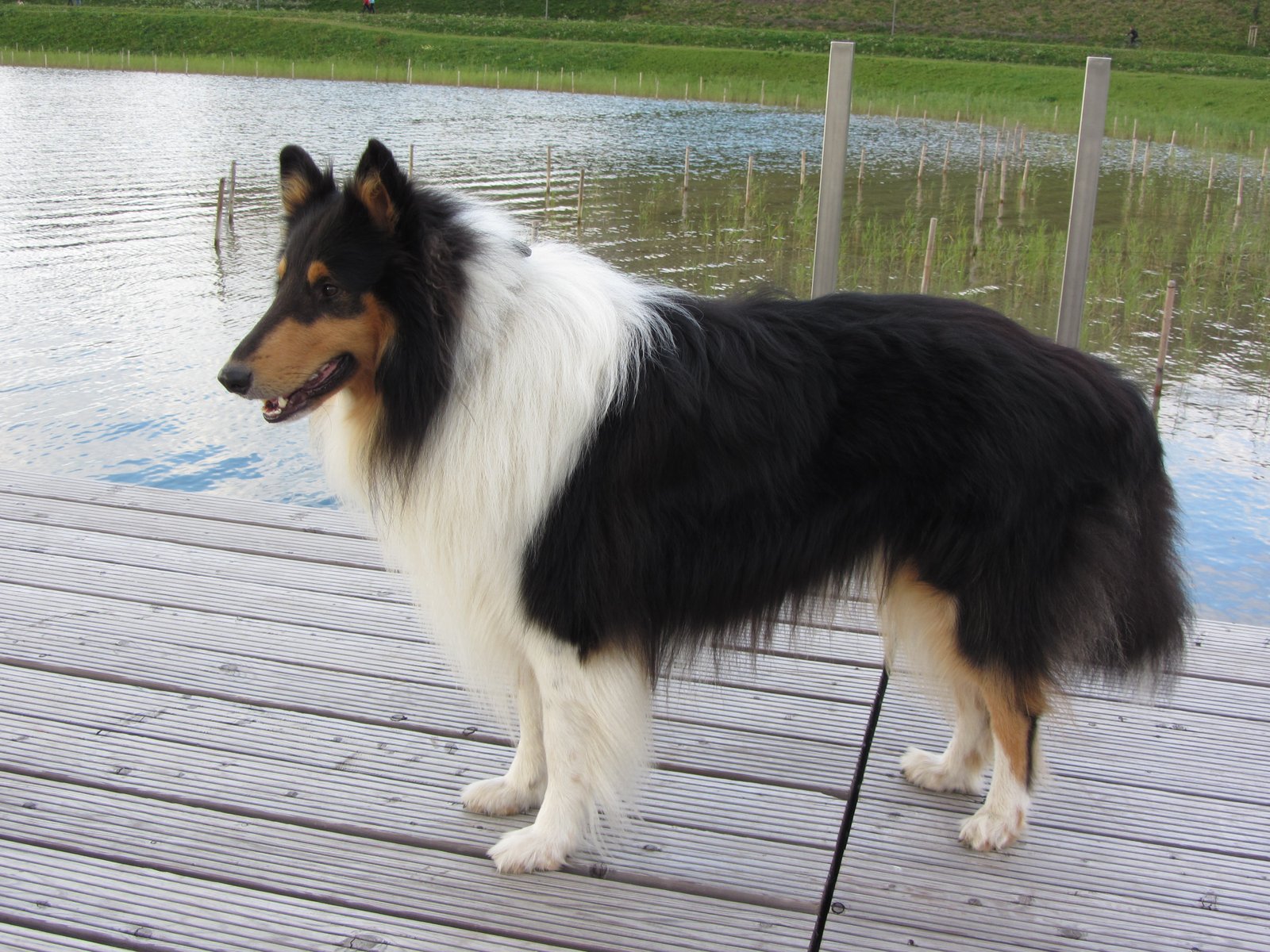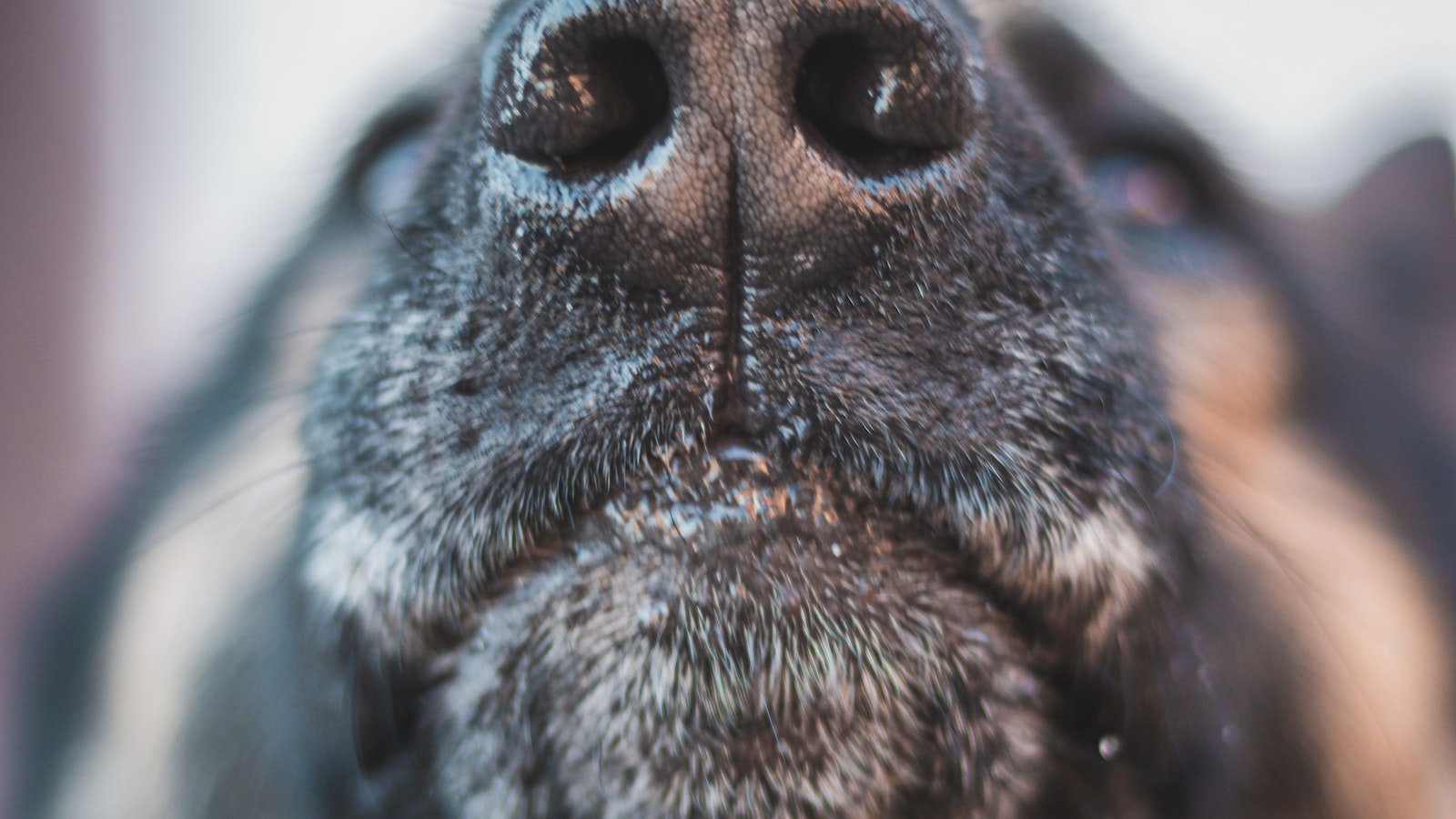With the rising sun casting its golden rays on the sprawling green pastures, a familiar scene unfolds amidst the tranquil countryside: a skilled herder and their trusty sheepdog, dancing like a perfectly synchronized duo. As the herder gracefully whistles commands and the sheepdog responds with unwavering devotion, the captivating spectacle of sheepdog trials comes to life. If you too dream of mastering this art form, of communicating effortlessly with your four-legged companion while guiding a flock with finesse, then let this guide be your faithful shepherd. In this article, we delve into the world of dog training specifically tailored for sheepdog trials, unraveling the secrets and techniques that elevate ordinary canines into extraordinary herding champions. Prepare to embark on a journey that will leave you in awe of the remarkable bond between human and dog, and equip you with the knowledge and skills to embark on your own triumphant quest to become a masterful herder.
Table of Contents
- A Collie’s Instincts: Unleashing the Potential for Sheepdog Trials
- Building a Strong Foundation: Essential Training for Herding Dogs
- Navigating the Trial Course: Tips for Precision and Efficiency
- Understanding Sheep Behavior: Strategies for Effective Communication
- Mastering Whistle Commands: A Key Tool for Successful Sheepdog Handling
- Q&A
- Future Outlook

A Collie’s Instincts: Unleashing the Potential for Sheepdog Trials
Collies are known for their exceptional herding abilities, making them a popular breed choice for sheepdog trials. These highly intelligent and instinctive dogs possess a unique set of skills that enable them to navigate challenging terrains and control livestock with precision. Understanding and harnessing a Collie’s natural instincts is key to unlocking their full potential in sheepdog trials.
The Alpha Instinct:
The Collie possesses a strong alpha instinct, which fuels their drive to establish leadership and maintain order within a herd. This innate quality enables them to take charge, anticipate the movement of livestock, and make split-second decisions while herding. By understanding and respecting this instinct, trainers can effectively communicate with their Collies and develop a harmonious working relationship based on mutual trust and respect.
The Eye and Stalk:
The Collie’s most defining instinct is their remarkable ability to control livestock using their intense stare, commonly referred to as “the eye.” This instinctive behavior, accompanied by a stealthy stalking approach, allows them to exert influence over livestock without the need for excessive force or intimidation. Their ability to analyze and predict the behavior of individual sheep enables Collies to maneuver them with precision, maintaining a calm and orderly atmosphere.
The Gathering Technique:
Collies utilize a specific gathering technique when herding livestock, making them highly efficient in sheepdog trials. With a combination of controlled barking, sweeping movements, and guiding commands, Collies can bring scattered livestock together into a cohesive group. This instinctive gathering technique not only showcases the Collie’s intelligence but also their innate ability to assess the overall situation and make strategic decisions to achieve the desired outcome.
Sheepdog trials provide the perfect platform to witness the incredible instincts of a Collie being unleashed. These trials not only showcase the breed’s herding skills but also celebrate their natural talents and intelligence. By understanding and working in harmony with their instincts, trainers can help Collies reach their true potential in these captivating and challenging competitions.

Building a Strong Foundation: Essential Training for Herding Dogs
As a dedicated herding dog owner, it is crucial to lay down a solid groundwork for their essential training. Building a strong foundation for herding dogs goes beyond basic obedience commands, focusing on skills and instincts that are inherent to their breed. By providing consistent and structured training, you can help your dog reach their full potential as a herding companion.
One of the first steps in establishing a strong foundation is to nurture their natural herding instincts. This involves teaching them to focus their attention on a target and respond to verbal or visual cues. Incorporating exercises that enhance their ability to stalk, chase, and control livestock will further develop their herding abilities.
To optimize training success, it is essential to introduce your herding dog to various environments and scenarios. This exposure will help them adapt and remain composed in different settings, including noisy or crowded areas. Consistently challenging their problem-solving skills by presenting them with new obstacles and tasks will also strengthen their ability to think independently and make decisions in unpredictable situations.
Providing mental stimulation and physical exercise is vital for a herding dog’s overall well-being and focus. Engage them with activities like puzzle toys or obedience games that require them to solve a problem or follow a series of commands. Regular exercise in the form of long walks, runs, or agility training sessions also provides an outlet for their energy, keeping them physically fit and mentally sharp.
Remember, patience and reward-based training methods are key to developing a solid foundation for your herding dog. Celebrate their successes and offer positive reinforcement to encourage good behavior. By investing time and effort into their training, you will build a partnership based on trust and mutual understanding, creating a strong foundation that will benefit both you and your herding companion for years to come.

Navigating the Trial Course: Tips for Precision and Efficiency
When it comes to navigating the trial course, precision and efficiency are key. Whether you’re new to the sport or a seasoned athlete looking to improve your performance, these tips will help you tackle the course with confidence and finesse.
1. Study the Course Map: Before you even set foot on the trial course, take the time to study the course map. Familiarize yourself with the twists, turns, and obstacles you’ll encounter along the way. This will give you a strategic advantage by allowing you to plan your route and anticipate any challenges that lie ahead.
2. Maintain a Steady Pace: It’s easy to get caught up in the excitement and rush through the course, but maintaining a steady pace is crucial for precision and efficiency. Focus on your breathing, stay relaxed, and avoid unnecessary energy expenditure. By pacing yourself, you’ll be able to make split-second decisions and execute them flawlessly.
3. Master Your Techniques: Precision requires mastery of the techniques necessary to navigate each obstacle effectively. Whether it’s a precision jump, a wall climb, or a balance beam, practice these techniques repetitively until they become second nature. Develop your strength, flexibility, and coordination to ensure smooth and efficient movements throughout the trial course.
4. Stay Focused and Adapt: Trials are unpredictable, and obstacles may require adjustments on the fly. It is essential to stay focused and adapt quickly to changing circumstances. Keep your eye on the prize, focus on the task at hand, and be open to alternative strategies if needed. By maintaining your composure and staying adaptable, you’ll increase your chances of navigating the trial course with precision and efficiency.
Remember, precision and efficiency go hand in hand when it comes to navigating the trial course. With these tips in your arsenal, you’ll be well on your way to conquering the course and achieving your personal best. So, gear up, trust in your abilities, and embrace the adventure that lies ahead!
Understanding Sheep Behavior: Strategies for Effective Communication
When it comes to communicating with sheep, it is crucial to have a deep understanding of their behavior and language. By recognizing and adapting to their unique instincts and social dynamics, you can ensure effective communication with these gentle creatures.
- Patience is Key: Sheep are naturally skittish animals, so it is important to approach them calmly and patiently. Rushing or making sudden movements can easily startle them and disrupt trust. Take your time and allow them to acclimate to your presence before attempting any interaction.
- Speak Their Language: While sheep may not understand human words, they are highly receptive to tone and body language. Use a gentle and soothing voice when addressing them, allowing your words to be accompanied by gestures and facial expressions that convey kindness and reassurance.
- Establish a Hierarchy: Sheep function within a hierarchy, with each member knowing their place in the flock. As a communicator, it is important to establish yourself as a trusted leader. Using consistent gestures and vocal cues, you can help them recognize your authority and build a cooperative relationship.
- Observation and Adaptation: Take the time to observe their behavior and body language, as it can reveal vital information. By understanding their posture, facial expressions, and vocalizations, you can gauge their emotional state and adjust your communication accordingly.
Remember, effective communication with sheep is not a one-size-fits-all approach. Every sheep has its unique personality and preferences, so it is essential to adapt your strategies to meet their individual needs. By investing time and effort into understanding their behavior, you can foster a strong and harmonious bond with these remarkable creatures.
Mastering Whistle Commands: A Key Tool for Successful Sheepdog Handling
Understanding the Power of Whistle Commands
When it comes to successful sheepdog handling, mastering whistle commands is an invaluable skill that every handler should strive to attain. Whistle commands provide a concise and efficient means of communication between the handler and their canine companion, creating a seamless partnership that is essential for effective herding.
- Establishing Connection: Whistle commands enable handlers to establish a strong bond with their sheepdogs, ensuring that they are attentive and responsive even amidst the chaos of a grazing field. With a simple blow of the whistle, handlers can effortlessly grab their dog’s attention and convey their instructions.
- Enhancing Precision: Precision is paramount when herding sheep, and whistle commands play a vital role in achieving this. Through a combination of different whistle sounds and tones, handlers can regulate the intensity and direction of their sheepdogs’ movements, allowing for efficient maneuvering and precise control.
- Achieving Clarity: In the midst of a large flock, verbal commands may get lost in the cacophony of bleating and movement. However, whistle commands cut through the noise, offering a clear and unambiguous language that minimizes confusion. Handlers can rely on these distinct cues to ensure that their instructions reach their canine partners accurately.
Mastering whistle commands is an ongoing process that requires patience, practice, and a deep understanding of canine behavior. By harnessing the power of these unique signals, handlers can unlock the full potential of their sheepdogs and greatly improve their success in managing herds. So, grab your whistle and start honing this indispensable tool for a harmonious and productive relationship between you and your loyal working companion.
Q&A
1. How long does it take to train a sheepdog for trials?
Training timelines can vary, but on average, it takes several months to a year to fully train a sheepdog for trials. Consistent training, patience, and understanding the dog’s individual learning style are key factors in determining the duration of the training process.
2. What are the essential commands for a sheepdog during trials?
The essential commands for a sheepdog during trials include “lie down,” “steady,” “come bye,” and “away to me.” These commands help the dog navigate the flock, maintain distance, control speed, and change direction effectively, showcasing their herding abilities.
3. How can I establish a strong bond with my sheepdog?
Building a strong bond with your sheepdog is crucial for successful training. Spend quality time together, engage in interactive play, and establish a consistent routine. Positive reinforcement, such as treats and praise, will help foster trust and strengthen your connection.
4. How do I address common behavioral issues with my sheepdog?
When it comes to behavioral issues, like excessive barking or biting, it is important to understand their underlying causes. Consult with a professional dog trainer or behaviorist who specializes in working breeds to address and correct these issues effectively.
5. How can I prepare my dog for the noise and chaos of a trial environment?
Gradual exposure to trial-like environments is essential to prepare your sheepdog. Start with controlled socialization in areas with increased noise levels and distractions, and gradually expose them to livestock, other dogs, and the hustle and bustle of a trial setting.
6. What are the most common challenges faced during sheepdog trials?
Challenges in sheepdog trials often include maintaining control over the flock, navigating obstacles, and anticipating the movements of the sheep. Adequate training, clear communication, and experience allow both the dog and handler to overcome these obstacles and improve their trial performance.
7. Can older dogs be trained for sheepdog trials?
While it may be more challenging to train older dogs for sheepdog trials, it is not impossible. With patience, consistent training, and understanding their limitations, older dogs can still learn and participate in trials successfully, though the training timeline may be longer compared to younger dogs.
8. How important is the handler’s role in sheepdog trials?
The handler plays a crucial role in sheepdog trials, providing guidance, direction, and support to the dog. Clear commands, body language, and a mutual understanding between the handler and dog are vital for effective teamwork and successful execution of the trial tasks.
9. Are there different training methods for different breeds of sheepdogs?
While certain training principles remain consistent across breeds, variations in herding instincts might require slight adjustments in training methods. Understanding your dog’s breed-specific traits and tendencies will help tailor the training approach to best suit their individual needs.
10. Can I train my sheepdog for trials without prior experience?
While prior experience is not mandatory, seeking guidance from experienced trainers and attending training workshops can significantly benefit novice handlers. Learning from those with trial experience and observing successful teams will help you grasp the intricacies of sheepdog trials more efficiently.
Future Outlook
As we bring this guide to a close, we hope that you now possess the knowledge and skills required to transform your loyal pups into awe-inspiring sheepdog champions. The bond you share with your four-legged companions is unique, a timeless partnership destined to leave an indelible mark on the realm of herding.
Remember, dear herder, that training is not merely about obedience and commands; it is a symphony of communication, trust, and symbiosis. The art of guiding your canine charges is an intricate dance of instinct and intuition, melding their primal instincts with your guiding hand. Together, you will weave a tale of harmonious collaboration on the rolling hills and open pastures.
As you embark on this odyssey of sheepdog training, always approach each challenge with patience and understanding. Remember that patience is the shepherd’s virtue, and that Rome was not built in a day. Allow your dogs to grow, learn, and sometimes stumble as they traverse the labyrinth of herding. In this process, they will uncover their latent talents and embrace the essence of their ancestral calling.
With gentle whispers and firm gestures, you will discover an unspoken language that binds you and your herding companions. Watch as their eyes, once filled with gleeful curiosity, now glisten with an all-encompassing focus. Feel their eagerness palpable in each wag of the tail and each bounding step towards their woolen charges. Witness their transformation from mere pets to the elegant sentinels of the flock.
As you venture forth into the trials of the field, you may stumble upon obstacles that seem insurmountable, but fear not. Recall the words whispered by seasoned herders through the ages, who remind us that every obstacle is an opportunity for growth. Embrace these challenges as stepping stones towards excellence, as they will hone your skills and fortify the bond you share with your gifted canine companions.
In the grand tapestry of sheepdog trials, may you find fulfillment in each stride, each command given and each command followed with grace. Appreciate the mastery and artistry displayed by those who have come before you, for they embody the epitome of skill and respect for the timeless partnership between herd and herder.
So, dear reader, set forth and embark on this extraordinary journey. Let the rolling hills become your training grounds, the meandering rivers your guiding compass. Embrace the trials, relish the triumphs, and allow the age-old dance of dog and sheep to unfold before your very eyes. Through patience, trust, and unwavering dedication, you will not only shape world-class herders but also kindle a love affair with nature’s harmony that will echo through generations. Happy herding!
As an affiliate, my content may feature links to products I personally use and recommend. By taking action, like subscribing or making a purchase, you’ll be supporting my work and fueling my taco cravings at the same time. Win-win, right?
Want to read more? Check out our Affiliate Disclosure page.